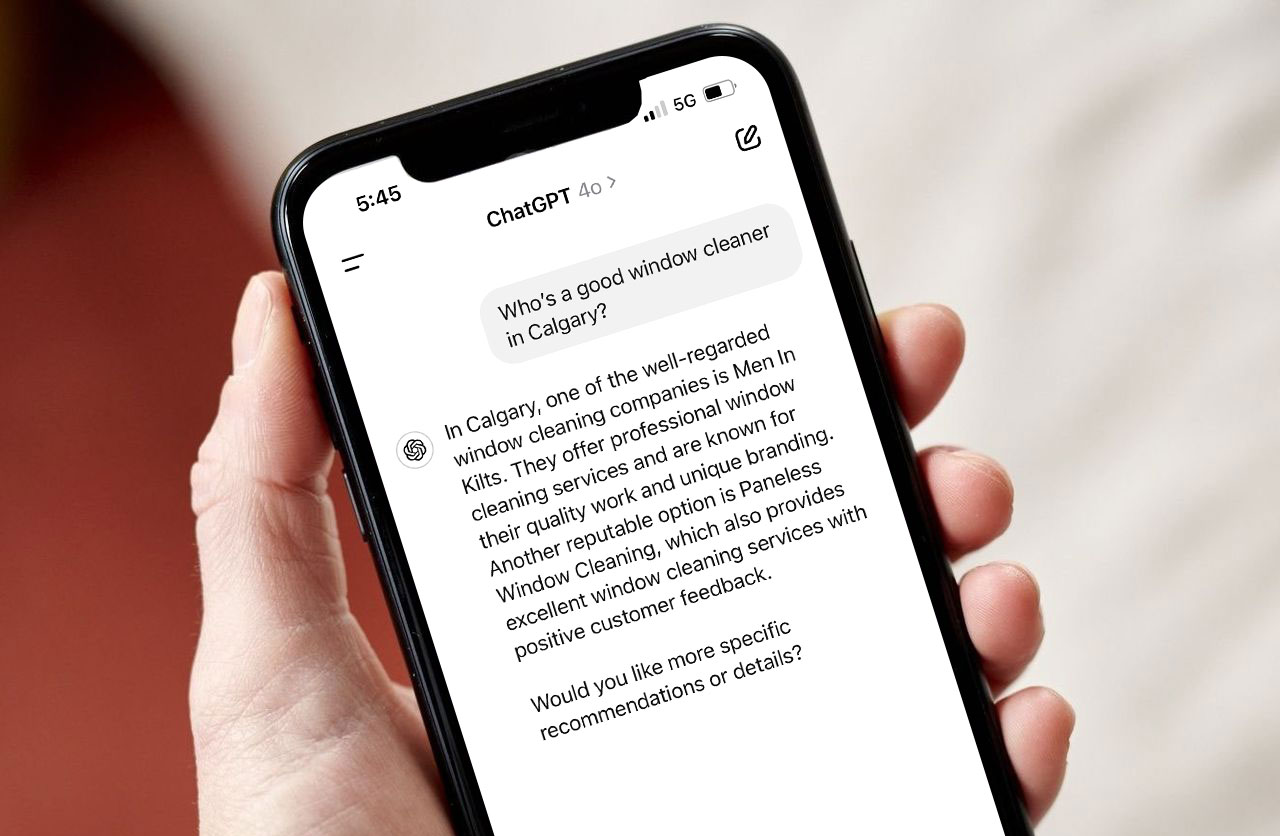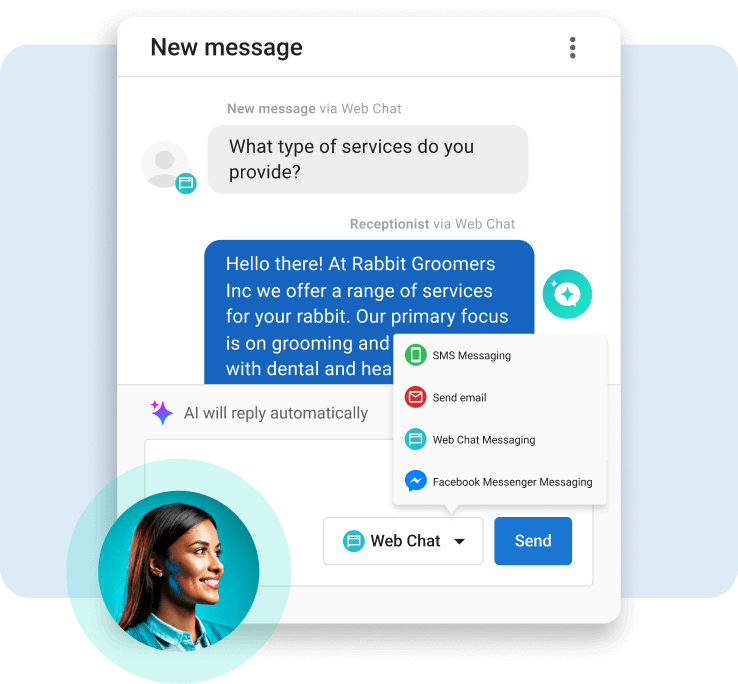In the ever-evolving landscape of digital marketing, how can small businesses stand out in a crowded online space? While traditional SEO has been a cornerstone strategy, the rise of artificial intelligence (AI) introduces a revolutionary approach – AI Answer Optimization (AIAO).
Harnessing AI Answer Optimization (AIAO) to Boost Your Small Business Online Presence
In the ever-evolving landscape of digital marketing, how can small businesses stand out in a crowded online space? While traditional SEO has been a cornerstone strategy, the rise of artificial intelligence (AI) introduces a revolutionary approach – AI Answer Optimization (AIAO).
Small businesses often operate with limited marketing budgets and need cost-effective strategies to increase their online visibility. Traditional SEO has been essential in helping businesses rank higher on search engine results pages (SERPs) by optimizing for specific keywords. However, as AI technology advances, search engines like Google and new answer providers like ChatGPT and Siri are becoming more sophisticated in understanding user intent, making it crucial for businesses to adapt their strategies.
AIAO Explained
AIAO goes beyond traditional keyword optimization by using AI to understand the context and intent behind user queries. This means creating content that directly answers the questions your target audience is asking. For small businesses, this shift means focusing on providing valuable, concise, and relevant answers rather than just stuffing content with keywords.
Adapting to Changing Search Algorithms – The Importance of Staying Current
Search engine algorithms are constantly evolving to provide users with the most relevant and accurate information. What worked in SEO a few years ago might not be effective today. Small businesses that fail to adapt to these changes risk losing their search rankings, which can significantly impact their online visibility and traffic.
Search engines prioritize content that provides a positive user experience. Factors like page load speed, mobile-friendliness, and the relevance of the content all play a role in how search engines rank your site. AIAO focuses on creating content that meets these criteria by delivering concise and accurate answers to user queries.
When users find relevant answers quickly on your site, they are more likely to stay longer, explore more pages, and convert into customers. This improved user experience not only boosts your search rankings but also helps build trust and credibility with your audience. For small businesses, this trust is essential for fostering customer loyalty and encouraging repeat business.

“For small businesses, this shift means focusing on providing valuable, concise, and relevant answers rather than just stuffing content with keywords.”
How to Leverage AIAO for Your Small Business
1. Understand User Intent
Identifying Common Questions – Start by using tools like Google Analytics, Search Console, and keyword research tools to understand what questions your target audience is asking. Look at search queries, user behavior, and trends to identify the most common and relevant questions.
Creating Targeted Content – Once you have a list of common questions, create content that provides clear and concise answers. Use a conversational tone and structure your content to be easily scannable. For example, use headings, bullet points, and short paragraphs to break down information.
2. Optimize for Voice Search
The Rise of Voice-Activated Devices – Voice search is becoming increasingly popular with devices like Amazon Alexa, Google Home, and smartphones. Users tend to use natural language and longer queries when using voice search.
Adapting Your Content – To optimize for voice search, focus on conversational keywords and natural language patterns. Use tools like AnswerThePublic to identify popular voice search queries related to your business. Ensure your content answers these queries directly and succinctly.
3. Make Content Changes in Key Areas
Website Content – Structure your website content to provide clear, concise answers to common questions. Use headers, subheaders, and bullet points to make information easily digestible.
Meta Descriptions and Tags – Optimize meta descriptions and title tags to reflect the questions users are asking. This helps search engines understand the relevance of your content and improves your chances of appearing in search results.
Schema Markup – Implement schema markup on your website to help search engines better understand and display your content. This structured data can improve your chances of appearing in rich snippets, which are highly visible in search results.
Blog Posts and Articles – Regularly update your blog with high-quality, informative articles that address specific queries your audience has. Use a conversational tone and natural language to align with voice search patterns.
Local Listings and Directories – Ensure your business information is accurate and consistent across all local listings and directories. This helps AI-driven searches provide reliable information about your business, improving local search visibility.
4. Monitor and Analyze Performance
Using Data-Driven Insights – Regularly monitor performance metrics such as click-through rates, time on page, and bounce rates. Use tools like Google Analytics to track these metrics and identify areas for improvement.
Continuous Optimization – Based on your performance data, continuously adjust your content strategy to improve search rankings and user experience. AIAO allows for dynamic optimization, ensuring your content remains relevant and effective.
Using AI to Create Content that Ranks in AI Answers
Businesses can harness the power of AI to create content that ranks highly in AI-generated answers by implementing a feedback loop driven by machine learning. This process begins with using AI tools to analyze user queries and identify the most common and relevant questions in their industry. Based on this data, businesses can generate targeted content that provides clear and concise answers to these questions. AI can then monitor how users interact with this content, tracking metrics such as click-through rates, dwell time, and user engagement. By continuously analyzing this performance data, the AI system can provide insights and recommendations for optimizing the content. This might involve tweaking headlines, restructuring paragraphs for better readability, or incorporating additional keywords that align with user intent. As the content is refined, it becomes more effective at addressing user needs, improving its chances of being featured in AI-generated search results. This feedback loop ensures that content remains relevant and useful, adapting to changing search algorithms and user behaviors over time, ultimately driving more traffic and conversions for the business.
AIAO offers a groundbreaking opportunity for small businesses to stay ahead of the competition and attract more qualified leads. By leveraging AI to understand user intent and provide valuable answers, you can improve your online visibility, enhance user experience, and drive significant traffic to your website.
Paired with an AI Employee, and CRM you can drive more customers to your business using AI along the entire customer journey. Contact Sica Marketing today to develop a customized AIAO strategy that aligns with your business goals and drives real results. I’m excited to chat.



